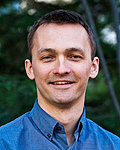Adding Trapped Molecules to the Quantum Toolkit
Category
Published on
Abstract
Development of laser-based techniques to cool and manipulate trapped atoms led to a quantum revolution, with applications ranging from creation of novel phases of matter to realization of new tools for navigation and timekeeping. Because of their comparatively richer internal structure, molecules offer additional potential for quantum-controlled chemistry, quantum information processing, and precision spectroscopy. However, obtaining control over the rotational quantum state of trapped molecules, a prerequisite for most applications, has presented a significant challenge because of the large number of internal states. I will discuss techniques we have developed to optically cool rotations of trapped molecular ions, using a single spectrally shaped broadband laser. I will also discuss our progress toward using this quantum control for molecular coherent manipulation, single-molecule fluorescence imaging, and single-molecule spectroscopy.
Bio
 Brian graduated from Stanford Univerity with a Bachelor's in Physics. He did his PhD research at Harvard University with Jerry Gabrielse, using a Penning trap to make a much-improved measurement of the electron magnetic moment; for this work, Brian received the 2006 DAMOP thesis award. For his postdoc, Brian took up dark matter research with supervisor Juan Collar at University of Chicago. Now at Northwestern, he leads an atomic and molecular trapping group.
Brian graduated from Stanford Univerity with a Bachelor's in Physics. He did his PhD research at Harvard University with Jerry Gabrielse, using a Penning trap to make a much-improved measurement of the electron magnetic moment; for this work, Brian received the 2006 DAMOP thesis award. For his postdoc, Brian took up dark matter research with supervisor Juan Collar at University of Chicago. Now at Northwestern, he leads an atomic and molecular trapping group.
Sponsored by
Department of Physics Condensed Matter Seminar Series, Purdue Quantum Center
Cite this work
Researchers should cite this work as follows:
Time
Location
Physics, Room 203, Purdue University, West Lafayette, IN